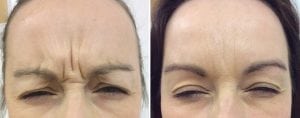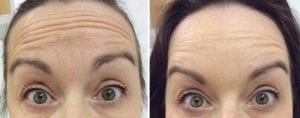Botox is for more than cosmetic facial rejuvenation
Botox is most commonly thought of as the “magic” wrinkle remover that was once the secret weapon of only celebrities and the rich and famous. Botox is the most popular cosmetic medical treatment in the US among men and women looking for economical and non-surgical facial rejuvenation. However, long before Botox was the cosmetic treatment for which it is best known, Botox was used, and still is, for a variety of medical indications.
Botox is one of several pharmaceutical products manufactured from an exotoxin which is produced by the Clostridium botulinum bacteria. This is the same bacteria that cause botulism, a sometimes- fatal disease contracted from eating improperly canned fruits and vegetables, or occasionally from exposure of wounds to contaminated soil, etc. There is also a variant form of botulism contracted by infants who ingest, not the toxin, but the clostridium spores, from eating honey.
Trivia: Though rare, when a canned food is found to harbor the Clostridium bacteria, what is the most common canned culprit?
Answer: Traditionally, the answer has been peppers, but according to the CDC, over the last 5 years the sources of food borne botulism have included carrots, beets, soups, and fish, including improperly prepared seal flipper.
One of the devastating symptoms of botulism is paralysis or muscle weakness. Scientists studying botulism found that they could extract, isolate, and purify some of the exotoxin and make it into a concoction, that when injected into or near a muscle, would cause temporary weakness. In fact, botulinum toxin was studied as a potential biological weapon in WWII.
The first clinical use of botulinum toxin for medicinal purposes occurred in the 1960s and ‘70s when ophthalmologist Dr. Alan B. Scott began injecting small amounts into the eye muscles to try to correct various forms of “crossed eyes” (medically referred to as strabismus). He eventually won FDA approval in 1978 for his purified version of botulinum toxin, which he named Oculinum. Ten years later, Allergan, the pharmaceutical giant, bought the rights to Scott’s product, changed its name to Botox, and the rest, so they say, is history.
Botox Now
Today botulinum toxin is marketed under several brands including Botox, Dysport and Xeomin (made from type A toxin), Myobloc (made from type B toxin). There is no actual bacteria in Botox. During production the toxin is extracted, purified, and dose-standardized so that it can be injected in small reproducible unit for the desired effects. Currently approved indications include blepharospasm (involuntary closing of the eyelids), various movement disorders and muscle-contraction disorders, excessive sweating, overactive bladder, migraine, and the list keeps growing.
Botox is injected beneath the skin into or near a muscle using a syringe and a small needle. Botox blocks signals from the nerves to the muscles. The injected muscle can no longer contract, which in the case of cosmetic use, causes the wrinkles to relax and soften. These effects can be harnessed by our physicians to improve frown lines between the brows, crow’s feet at the outer corners of the eyes, horizontal lines in the forehead and eyebrow height and shape. The injections are only mildly uncomfortable and take only a few seconds. Improvements in facial appearance typically last three to four months. This means that treatments usually need to be repeated periodically.
Side effects of the injections include pain and bruising or swelling at the injection site which are usually minor. Other side effects can result in overproduction or underproduction of the desired effects or in the unwanted weakening of nearby muscles. Naturally, the side effects, if any, also wear off in several months, as the effects of Botox, both the wanted and unwanted, are typically not permanent.
Next time you’re at a party and you see someone who looks just a little younger than they used to, while you’re complimenting them on their youthful appearance, remember that Botox was used for many movement disorders long before its cosmetic use became popular. Also, maybe consider skipping the seal flipper if it’s being served…



 ANNOUNCING UPDATES TO OUR COVID-19 SAFETY PROTOCOLS
ANNOUNCING UPDATES TO OUR COVID-19 SAFETY PROTOCOLS